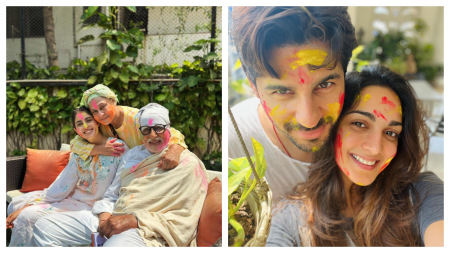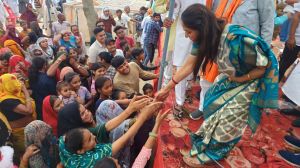- India
- International
V. K. Murthy [1923-2014] / A Life in Light & Shadow
V.K. Murthy was a part of Guru Dutt’s technical team, shooting masterpieces such as Pyaasa, Kaagaz Ke Phool, Sahib Bibi Aur Ghulam and C.I.D. Apart from being the first Indian cinematographer to win the Dadasaheb Phalke Award in 2008, he was also the first Indian cinematographer to shoot in CinemaScope, a format which uses an anamorphic lens to shoot wide-screen movies. His contemporaries remember the artist in him
 V. K . Murthy
V. K . Murthy
Govind Nihalani
Cinematographer and Film-maker
I first heard about V.K. Murthy at Shree Jaya Chamrajendra Polytechnic Institute in Bangalore, where I studied cinematography in the early ’60s. He graduated from the same institute and was already a legend as he had done Pyaasa (1957) by then. After the film, he dominated the imagination of every student at the institute. That’s when I decided to become his assistant. I met him in Mumbai when he was working on Ziddi (1964), directed by Pramod Chakravorty. Whatever I am today is because of him. It was not a relationship of a cameraman and his assistant, it was that of a guru and shishya. He always believed that the story of a film is a director’s vision and he would strive to recreate that for the audiences. Murthy never approached cinema as just a series of images. Every frame and every shot had a purpose. That was my biggest learning from him. He was a fearless innovator.
The kind of photography seen in films such as Kaagaz Ke Phool (1959) and Chaudhvin Ka Chand (1960), which are considered as landmark films in Indian cinema, was sheer brilliance.
Manoj Kumar
Actor-Director
V. K. Murthy was a silent worker. When we worked together in Kalyug Aur Ramayan (1987), he wouldn’t interfere with anyone on the sets. He didn’t even need assistants. He would fix up the light spots, adjust the lighting, come back and handle the camera himself. A person of few words, he was a man of action. This dedication and focus showed in his work. Even today, you remember him for the images he created in Kaagaz Ke Phool and Pyaasa. In 2008, he got Dadasaheb Phalke Award, an honour well deserved. We kept in touch once every two months. His passing away is another gem lost from an important era in cinema.
Shivendra Singh Dungarpur
Film-maker
V. K. Murthy was one of the most disciplined people I have met in my life. Another little known fact about him is that he played the veena very well. He is the only cinematographer to be honoured with the Dadasaheb Phalke Award. He is known for his astounding work in black-and-white films. One of the most talked-about scene shot by him is the song Waqt ne kiya from the movie Kaagaz Ke Phool. This song featuring Waheeda Rahman, who is standing in a shaft of light, established his greatness. He translated Guru Dutt’s vision on celluloid brilliantly in movies like Pyaasa and Sahib Bibi Aur Ghulam (1962). When Guru Dutt wanted to shoot in colour, he sent Murthy to spend some time with the Guns of Navarone (1961) team in the UK. He has left behind the legacy of methodical film lighting.
I wished to make a documentary on him and that’s how I ended up spending a lot of time with him — talking about movies, his work, cameras and shots. However, it’s one of my biggest regrets that we could not shoot much of this documentary and it will never be completed now. We should restore his films, so that the present generation can study his work.
Photos
Apr 25: Latest News
- 01
- 02
- 03
- 04
- 05









































